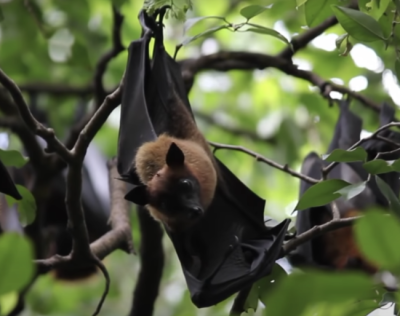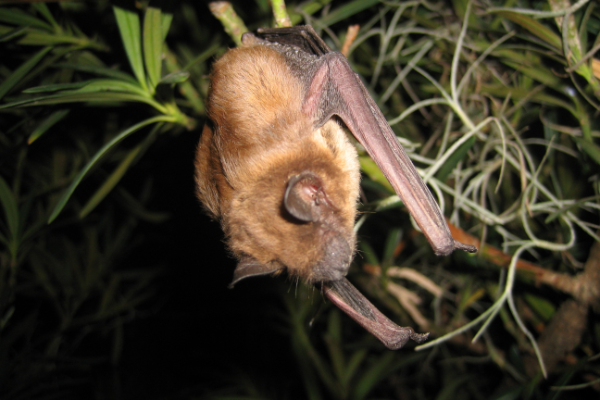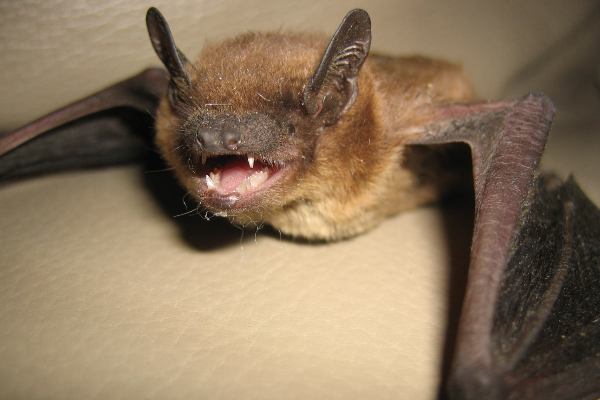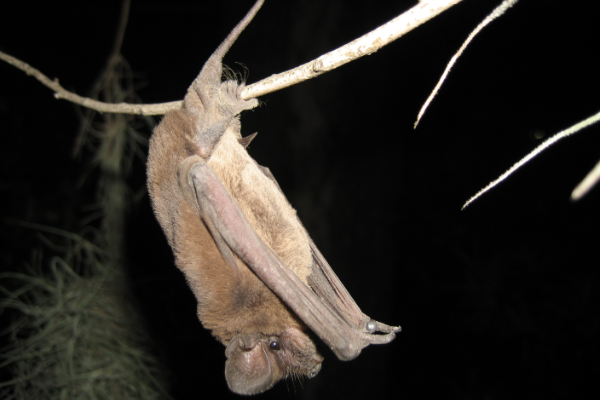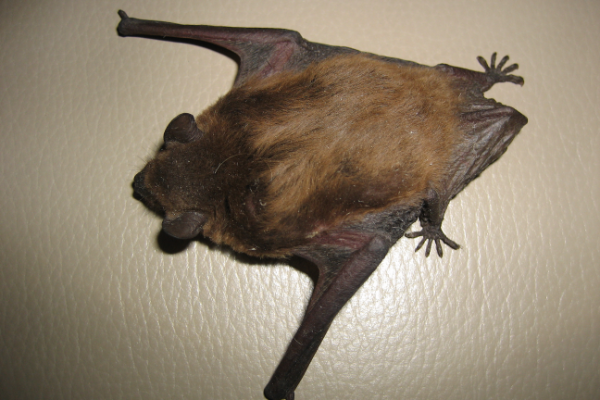Description
Big Brown Bats
The Big Brown Bat (Eptesicus fuscus) is pretty much one of the most widespread mammals in North America, ranging from Canada throughout the United States and Central America, and into north-western South America. It also exists on several islands including Cuba, Jamaica, and Puerto Rico. It is the only bat that is the North American representative of the genus Eptesicus north of Mexico. It most likely has been spread throughout the Pleistocene (about 2.6 million years ago and lasted until about 11,700 years ago – the most recent Ice Age). Here are the ways in which we shall succinctly describe and identify the Big Brown Bat!
Appearance
The big brown bat possesses morphological variation in considerable proportion across its range and is represented by 11 subspecies. Notwithstanding, it is distinguished from sympatric species by its relatively large size, bi-colored pelage (blackish-brown to pinkish-tan above, paler underneath), short blunt tragus, and long fur (which is exceptionally soft, and has a somewhat oily texture). So, when you see a medium-sized bat with an upper body color of rich chestnut brown; ears relatively small, thick, leathery, and black; membranes blackish; under-parts paler than back; ears and membranes with little or no hair; broad and short wing with the length of the fifth metacarpal, and large, powerful jaws? Then yes, you have just come across the Big Brown Bat!
Diet
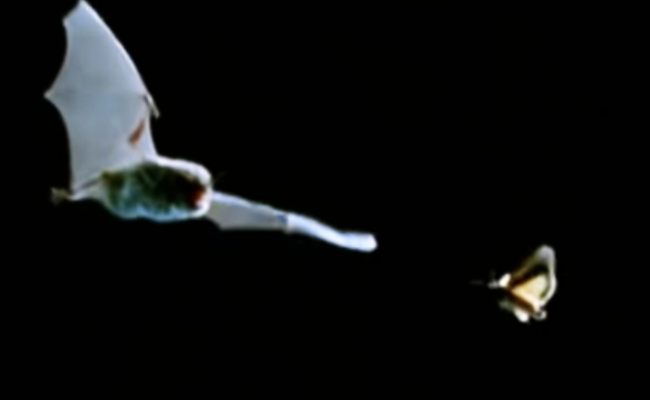
The Big Brown Bat is insectivorous, which means that their food is entirely insects which they capture in flight. They are also generalists and do not have a preference for over-water versus over-land foraging sites. They begin hunting within an hour after sunset and spend an average of 100 min/night foraging. Its prey varies by geographic location. The Big Brown Bat possesses large, powerful jaws, and they prey on the following:
- Beetles
- Moths
- Mosquitoes
- Dragonflies
- Bees
- Flies
- Stone Flies
- May Flies
- True Bugs
- Nerve Wings
- Scorpion Flies
- Caddisflies and other hard-bodied insects (E.G., Hemipterans).
However, it should be noted that this bat can exploit a variety of other prey types and is flexible both temporally and spatially concerning prey use.
Behavior
Here are some behavioral facts about them! The big brown bat is nocturnal. This means that they roost in sheltered places during the daytime. They would rather come into view early in the evening and feed among the trees, usually enacting a continuous routine of going from one treetop to another and then back again. They harness a wide variety of structures for roosts that include caves, buildings, storm drains, bat boxes, tunnels, tree cavities, woodpiles, mines, and rock crevices. They generally roost in cavities, though they can sometimes be found under shed barks.
In the summer, the male big brown bats are most often solitary. However, they may form small, all-male colonies. Males will also sometimes roost with adult females. Females usually show and enact what is called 'philopatry.' That means the "love of place," with about 10-30% of female offspring returning to their natal roost, which is their birthplace, to breed the succeeding year. Up to 72% of adult females use the same roost in the following years.
Mating for them occurs in the fall, winter, or spring. The female big brown bats that mate during fall or winter reserve the sperm of the male in their uterus until spring, which is then used to fertilize eggs. Females form maternity colonies after leaving the wintering site. Young are born in May and June. Two young are born per female. The young bats come to size when they are about two months, and can fly when they are up to four weeks old after birth.
The female big brown bat usually forms vast maternity territories in caves, buildings, and trees to birth and raise their young. By doing so, thermoregulation (which is the temperature control) costs go down, which is, of course, important as stable temperatures are vital for the proper development of young.
They also harness cooperative foraging to reduce the energy spent searching for prey. It also helps them minimize predation risk when they are in colonies.
Habitat
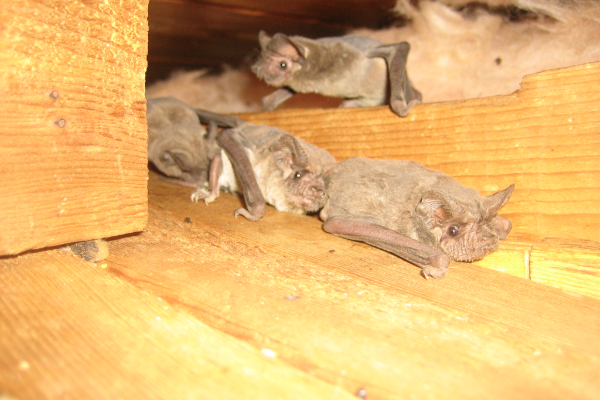
The following are what you should know about their habitat;
These bats make habitats in attics, mines, bridges, caves, barns, and trees in the summer. They usually are forest dwellers. However, they do not hesitate to utilize attics and crevices in buildings, as well as caves and holes in rocks for daytime retreats. It should be noted that favorite roosts are under the loose bark of actual dead trees and in cavities of trees. In the winter, these bats can be found in caves, mines, attics, and buildings.
The big brown bat can withstand cold more than other bats, and so it can hibernate in more places. They can migrate hundreds of miles, but the big brown bats in southern regions are likely to be year-round residents. The big brown bat hibernates during the course of the coldest parts of winter. Even so, their relatively large size helps them remain active at lower temperatures than most North American bat species. Some hibernation sites encompass snags, deep rock crevices, caves, tree cavities, and man-built structures with steady temperatures that range between 32 and 41 degrees Fahrenheit.
They are typically found hibernating solitarily in rock crevices, or sometimes in groups of dozens of bats in man-built structures and caves during early December through March. When there is a decrease in ambient temperature, hibernation in big brown bats is triggered. It is interesting to note that males and females deposit fat in anticipation of hibernation. However, the female deposits fat about a month earlier than the males. Notwithstanding that females begin fat deposition earlier, males enter hibernation first. Big brown bats seasonally hibernate at terrain temperatures below freezing, using rock crevices, old buildings, caves, and mines as their tent for winter quarters. Most big brown bats do not hibernate in colonies, but hibernation within small groups is not uncommon.
Sounds
Here are some interesting facts you need to know about the sounds they make;
Big brown bats produce a unique sound to warn their respective rivals, which is some ultrasonic social call. It is called the "frequency-modulated bout."
More interestingly, they use ‘Echolocation’ to navigate, avoid obstacles, and hunt. They can also make audible noises like hissing.
Infant big brown bats will sound an “isolation call” that can be heard from about 10 Miles away when they are separated from their mothers or fall from the nest. Females respond with an 'ultrasonic chirping noise.'
Big brown bats demonstrate a 24-hour behavior rhythm that is quite persistent but inexact. They use ‘olfactory cues’ to distinguish among individual colony members as well as between young in a maternity colony. This is likely to reduce agonistic interactions.
Droppings:
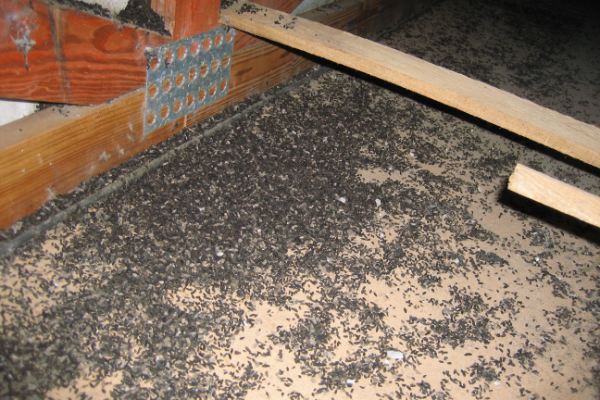
Finally, some precautions are to be acknowledged. A strong smell of ammonia, for instance, is an indicator that there could be a considerable accumulation of bat droppings called ‘guano’ in your home. Although these bats probably aren’t on your guest list (and of course, they shouldn’t be), they're quite important to the environment. Since they are insectivorous, they can get rid of a lot of annoying bugs around your home like flies and mosquitoes. For this and other reasons, many pest management companies use carefully timed practices to make sure that the bats and their young are safely kept out of people’s homes as well as enabling them to find sa new place to live freely.
